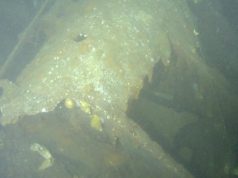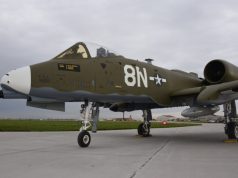An expedition privately funded and executed by two former US Navy Officers has successfully re-located, surveyed, and filmed the USS Johnston, the world’s deepest known shipwreck that principally lies at a depth of 21,180ft (6,456m).
The funder of the expedition, Victor Vescovo, is a former US Navy Commander (Ret.) who personally piloted his submersible DSV Limiting Factor down to the wreck during two separate, eight-hour dives. According to Caladan Oceanic, these constituted the deepest wreck dives, manned or unmanned, in history.
The USS Johnston (DD-557) was a US Navy Fletcher-class destroyer that sank in battle on 25th October 1944. The Johnston measured 376 ft (115m) long with a beam of 39ft.
The ship was sunk during an intense battle against vastly superior Japanese forces off the coast of Samar Island during the Battle of Leyte Gulf, widely cited as the largest naval battle in history.
“In no engagement in its entire history has the United States Navy shown more gallantry, guts and gumption than in the two morning hours between 0730 and 0930 off Samar,” wrote Rear Admiral Samuel E. Morison in his History of U.S. Naval Operations in World War II.
Upon the commissioning of the ship, the destroyer’s ¾ Native American Captain from Oklahoma, Commander Ernest Evans, told his crew that he would “never run from a fight,” and that “anyone who did not want to go in harm’s way, had better get off now.” None of his crew did so.

The wreck, the deepest shipwreck ever located, was originally discovered in 2019 by the late Paul Allen’s vessel R/V Petrel under the leadership of renowned ocean wreck explorer Robert Kraft. On that expedition, film of pieces of the vessel were taken by a remotely-operated vehicle (ROV), but the majority of the wreck including its upright, intact forward two-thirds including bow, bridge, and mid-section lay deeper than the ROV’s rated depth limit of approximately 20,000ft (6,000m).
Caladan Oceanic was able to make the dive thanks to the submersible DSV Limiting Factor, which has no operating depth limitation, does not require a tether to the surface, and can hold two occupants for real-time visitation and analysis of wrecks.
It has now been discovered that its hull number “557” is clearly visible on both sides of its bow and two full 5” gun turrets, twin torpedo racks, and multiple gun mounts are still in place and visible on the superstructure. No human remains or clothing were seen at any point during the dives and nothing was taken from the wreck.
Extensive research by naval historian and Annapolis alumnus LCDR Parks Stephenson, USN (Ret.) allowed the position of the wreck to be plotted as part of the development of a dive plan. “We used data from both the US and the Japanese accounts and as is so often the case the research brings the history back to life. Reading the accounts of the Johnston’s last day are humbling and need to be preserved as upholding the highest traditions of the Navy. This was mortal combat against incredible odds.”
Vescovo has held ongoing discussions with Navy Heritage and History Command (NHHC) about investigation of the wreck and the protocols for not only preserving it but respecting it as the final resting place for many of its crew.
All of the sonar data, imagery and field notes collected by the expedition is not to be made public but will, however, be provided to the US Navy for dissemination as it deems appropriate at its sole discretion.
“We have a strict ‘look, don’t touch’ policy but we collect a lot of material that is very useful to historians and naval archivists. I believe it is important work, which is why I fund it privately and we deliver the material to the Navy pro-bono,” said Vescovo.
“The Naval History and Heritage Command greatly appreciates the efforts of Commander Vescovo and his expedition team in positively identifying the wreck of the destroyer USS Johnston (DD-557,) lost on 25th October 1944 in one of the most heroic actions in the entire history of the US Navy,” Rear Admiral Samuel Cox, Director of Naval History and Curator for the Navy said.
“Commander Ernest Evans and his entire crew went above and beyond the call of duty engaging an overwhelming and vastly superior Japanese force to buy time for the escort carriers he was charged with protecting, to escape. The Johnston was awarded a Presidential Unit Citation — the highest award that can be given to a ship. Evans was awarded a posthumous Medal of Honor, the first Native American in the US Navy and the only destroyer skipper in World War II to be so honored.”



























